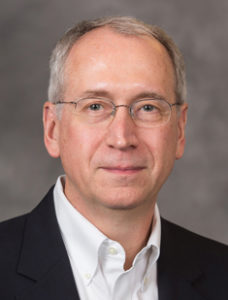Traditional space missions employ one or a few massive spacecraft that make sophisticated, remote, or in situ single–point measurements. However, coordinated fleets (tens to hundreds) of relatively–simple pico–or femtosats could provide the game–changing ability to perform simultaneous, multi–point measurements in space or, alternatively, compose elements in a sparse, space–based, reconfigurable antenna array. These capabilities could fundamentally transform monitoring of natural disasters, space weather, and the broader space environment. Propellantless propulsion technology could allow these small satellites to maneuver and maintain their orbits and formations without the need for large amounts of propellant and storage tanks. Studies have shown that electrodynamic tethers may be that key enabling propellantless propulsion technology.
The key questions MiTEE will answer will help us understand the physical dynamics (how it moves) and electrodynamics (how current is attracted from and emitted to the surround ionosphere and flows through the conducting tether generating thrust) central to the system’s operation.
The MiTEE team is currently on track to launch its first spacecraft (i.e.,MiTEE 1) in December 2020 which will create future opportunities for campaign–style data collection. In 2021, in addition to science operations, the MiTEE team is working on their more ambitious second satellite: MiTEE 2. This project will be to create a spacecraft with an operational ED tether for the first experimental testing of propellantless operation in space. NOTE: Students who join this faculty research team will become de facto members of the Student Space Systems Fabrication Lab (S3FL).
Meeting time and location:
Team organization:
This team has flexible subsystem teams that allow students to deepen their learning. Each MiTEE subsystem team has a Lead that reports to and meets once per week with the other Leads and the MiTEE Systems team (Chief Engineer, Lead Systems Engineer, Project Manager, and faculty PI). The teams are flexibly structured to enhance creativity and opportunity for student growth.
More Information
Electrical Power Subteam (2 Students)
Specific Tasks: Circuit design, prototyping
Preferred Skills: Electrical engineering, any circuit building experience
Likely Majors: Electrical Engineering, Computer Science (CSE/CS-LSA)
Plasma Electrodynamics Subteam (2 Students)
Specific Tasks: Circuit design, prototyping, charged prototyping, charged particle reactions, plasma physcis, materials science
Preferred Skills: Electrical engineering, knowledge of electromagnetism, any circuit building experience
Likely Majors: Electrical Engineering, Material Science, Climate and Space Sciences & Engineering, Computer Science (CSE/CS–LSA)
Communications Subteam (2 Students)
Specific Tasks: Circuit design, prototyping, wireless communication system design
Preferred Skills: Any experience with electromagnetism/wireless communications, taking/taken EECS 230, taken/taking EECS 411/430, physics–based electro magnetism coursework beneficial
Likely Majors: Electrical Engineering, Computer Engineering
Orbit Attitude Determination & Control Systems (2 Students)
Specific Tasks: Dynamic modeling/analysis, control system design, sensor validation
Preferred Skills: Attitude Modeling, Electrical engineering, any circuit building experience, any programming experience
Likely Majors: Aerospace Engineering, Climate and Space Sciences & Engineering, Electrical Engineering ,Computer Science (CSE/CS–LSA), Computer Engineering
Command & Data Handling Subteam (2 Students)
Specific Tasks: Embedded system design, programming
Preferred Skills: Any experience with embedded system software/hardware design
Likely Majors: Computer Science (CSE/CS–LSA), Computer Engineering, Electrical Engineering
Structures, Mechanical, & Thermal Subteam (3 Students)
Specific Tasks: Mechanical design, machining/prototyping, heat transfer and mechanical modeling
Preferred Skills: Experience with manufacturing and structural analysis, materials selection, and CAD experience helpful
Likely Majors: Mechanical Engineering, Materials Sciences, Aerospace Engineering, Computer Science (CSE/CS–LSA), Computer Engineering
Apprentice Researcher (4 Students)
Requirements: Interest in project material, willingness to develop skills.
Open to first-year and second-year undergraduate students ONLY.
Likely Majors: Any
Faculty Sponsor

Brian Gilchrist
Professor, Electrical Engineering and Computer Science and Co-Advisor, Multidisciplinary Design Program
Dr. Gilchrist is a professor in the Departments of Electrical Engineering and Computer Science and Climate and Space Science and Engineering. He also serves as the director of the Space Physics Research Laboratory (SPRL). He specializes in plasma electrodynamic sensors and technological applications principally for in-space applications. Dr. Gilchrist’s research efforts span in-space plasma measurements, ground-based chamber simulations of high-speed space plasma flows principally to investigate current collection and sheath physics, and the development of advanced space electric propulsion applications. He is at the forefront of efforts to develop space tether technology for scientific and technological applications including electrodynamic tethers as a new propellantless space propulsion technology.
Students: 12-16
Likely Majors: AERO, Any, CE, CS, EE, ME, Physics
Summer Opportunity: Summer research fellowships may be available for qualifying students.
Citizenship Requirements: This project is open to all students on campus.
IP: Students who successfully match to this project team will be required to sign an Intellectual Property (IP) Agreement prior to participation in January 2021.
Course Substitutions: Honors
